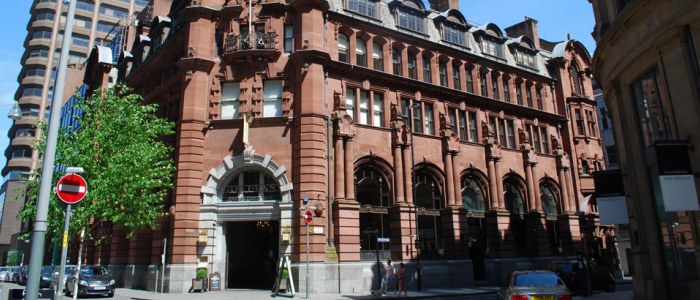
A Victorian bank in Manchester
Listing

Frank Kelsall is a Director of The Architectural History Practice Ltd www.architecturalhistory.co.uk
- Listing of buildings of special architectural or historic interest was begun under powers in the Town and Country Planning Act 1944. It has been a more or less continuous process ever since, now under powers in the Planning (Listed Buildings and Conservation Areas) Act 1990. Decisions on listing are made by the Secretary of State for Culture, Media and Sport who must list a building if it meets the criteria of special interest. Advice on this is offered by Historic England.
- Listing can cover many items not usually thought of as buildings – churchyard monuments, lamp-posts and railings, milestones, for instance. Listing also may also cover objects fixed to a listed building and buildings within its curtilage; these can be difficult matters on which professional advice should be sought.
- Listed buildings are graded at I, II* or II to show levels of significance and the grading affects some of the administrative procedures used to consider proposals affecting them. Most buildings (over 90%) are in the Grade II category.
- List entries in the National Heritage List now include a map identifying the location of the listed item. There is also a description but this is for information to help identify the building rather than to define its special interest. Many early list entries are very short although more recent listings have sought to be more detailed and indicate where the special interest lies.
- Illustrations of many buildings listed before 2000 can be found on the Images of England website: http://www.imagesofengland.org.uk/
- Listing usually affects the whole of a building, whether or not a particular part or feature is mentioned in the list description. This means that any works of demolition or alteration and extension which affect the character of the building should be the subject of a listed building consent application. The purpose of listing is not necessarily to prevent change but to control change so that the significance of a listed building is not damaged in the process.
- Applications to have a building listed should be made to Historic England. In view of its workload applications may be prioritized according to the nature of the threat, the importance of the building or the inclusion of a building in a defined survey area or building type.
- The current Principles of Selection for Listing, followed by Historic England, were set out in March 2010 by the Secretary of State. To supplement these general principles there is guidance for a number of building types, listed in Historic England Conservation Bulletin 52 and available on its website by searching ‘selection guides’.
- For further information visit https://historicengland.org.uk/listing/